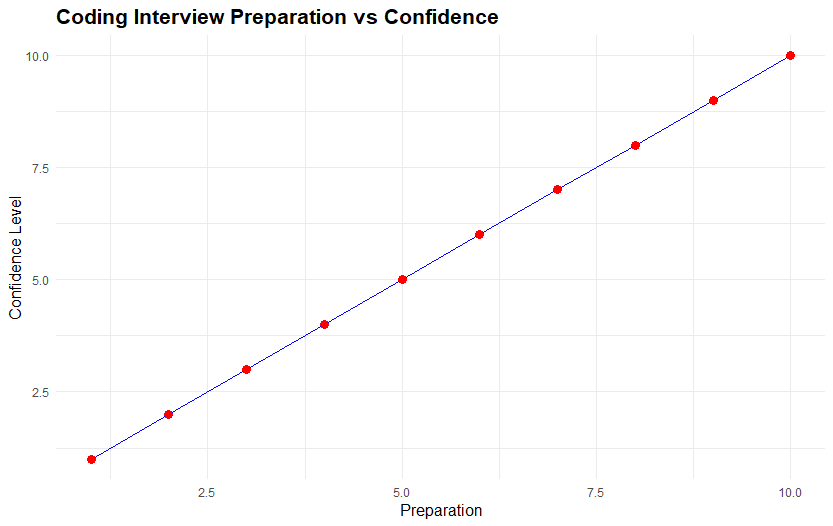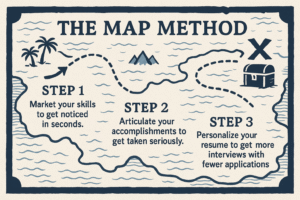
If you’re about to step into a biostatistics coding interview, it’s natural to feel a little nervous. Coding interviews can be a pivotal part of your job search. You’ve likely spent hours mastering the theories and concepts behind biostatistics, but now it’s time to prove your skills in a live coding environment.
The good news? With the right preparation and a calm mindset, you can handle the coding challenges that come your way. This article will walk you through exactly what you can expect in a biostatistics coding interview and how to best prepare. From common coding challenges to tips on how to handle real-time problem solving, we’ll help you feel more confident and ready to tackle any question thrown at you.
So, let’s break it down – what should you focus on, and how can you make sure you’re ready for anything? Let’s dive in.
Live Coding vs. Take-Home Assignments: The Key Differences
Before diving into what to expect in a biostatistics coding interview, let’s first set the stage by distinguishing between live coding and take-home assignments. Both are common ways to assess candidates, but they are quite different in their approach.
Live coding interviews are designed to see how you think on your feet. You’re given a problem (often a data manipulation task, statistical modeling, or algorithmic challenge) and expected to solve it while explaining your thought process. There’s no opportunity for deep research or revising the solution. You have to work through it in real-time, which can be stressful – but it’s also a chance to show off how you tackle problems under pressure.
Take-home assignments, on the other hand, allow you time to research, explore multiple solutions, and perfect your answer. Employers can assess how you approach complex problems, but with the added benefit of time and more refined solutions.
For this article, though, we’ll focus on live coding interviews and what you can expect in this high-pressure environment.
What You’ll Be Tested On: Core Areas to Focus
When it comes to biostatistics coding interviews, there are a few main areas that will likely be the focus. These are your “bread and butter,” the things you’ll need to have down pat if you want to perform well.
1. Data Wrangling and Transformation
In biostatistics, data is king, and you’ll spend a lot of time transforming, cleaning, and manipulating datasets. Here’s what you’ll need to focus on:
-
Merging and Joining Datasets: Understand how to combine data from multiple sources. Whether you’re using left joins, right joins, or inner joins, you need to be able to explain when and why to use each one. This is not just about knowing the syntax but also understanding how different types of joins can affect your analysis.
-
Handling Missing Data: This is a big one. Real-world data is messy. You’ll likely encounter datasets with missing values, and you’ll need to show how you’d handle that – whether through imputation, dropping rows, or a more sophisticated method.
-
Reshaping Data: Knowing how to pivot or melt datasets is essential. Whether it’s in Python with
pandasor R withtidyr, practice transforming data into the right shape for analysis.Example:
Let’s say you have patient data for multiple years and you need to transform it so each patient’s data is in a single row (one record per patient). How would you approach that?
2. Statistical Analysis and Modeling
Next up is the application of biostatistics. Employers want to know that you can apply statistical methods to data to answer real-world questions.
-
Basic Statistical Tests: Be prepared to work with common tests like t-tests, chi-square tests, and ANOVA. You should know when to use these and what their assumptions are.
-
Regression Models: Whether it’s linear regression, logistic regression, or survival analysis, you need to be able to implement these models and understand their underlying assumptions.
-
Interpreting Results: Employers aren’t just testing your ability to run code – they want to know if you understand what the results mean and how to interpret them. For instance, if you fit a logistic regression model, can you interpret the odds ratios? Can you explain why you might choose one model over another?
3. Data Structures and Algorithms
While biostatistics coding interviews tend to focus more on data wrangling and statistics, don’t be surprised if you’re asked about basic algorithms or data structures. It’s not about memorizing algorithms for sorting or searching, but understanding how to use them effectively when working with large datasets.
-
Efficiency: For example, can you handle a large dataset without running into memory issues? Can you optimize your code to run faster? Employers want to know you can solve problems efficiently -both in terms of time complexity and computational resources.
Example:
You might be given a large dataset and asked how you’d efficiently calculate the mean of a column without using a built-in function (example). This tests both your algorithmic thinking and your understanding of data structures.
How to Prepare: Steps to Set Yourself Up for Success
Preparing for a coding interview in biostatistics can feel overwhelming, but with a structured approach, you’ll be ready to tackle any problem that comes your way. Here’s how to get started:
1. Master Key Functions and Libraries
You don’t need to be an expert in every library out there, but you should be comfortable with key functions used for data wrangling and statistical modeling. Depending on the language you’re using, this might include:
- Python:
pandasfor data wranglingnumpyfor numerical operationsscipyandstatsmodelsfor statistical tests and modelsmatplotlibandseabornfor data visualization
- R:
dplyr,tidyr, anddata.tablefor data manipulationggplot2for data visualizationlm(),glm(), andsurvfit()for statistical modeling
Tip: Get comfortable with libraries that handle large datasets and work with them efficiently. Whether it’s dplyr in R or pandas in Python, ensure you understand their key functions for data manipulation and transformation.
2. Practice with Real-World Datasets
The best way to prepare for biostatistics coding interviews is to practice with real-world datasets. You can find datasets on sites like Kaggle or UCI Machine Learning Repository. These datasets are often messy and require the exact kind of data wrangling you’ll encounter in interviews.
- Work on cleaning datasets: Practice filling in missing values, transforming variables, or merging datasets.
- Explore statistics: Use the data to run statistical tests or fit models, and then practice explaining your results.
3. Focus on Problem-Solving, Not Just Syntax
Yes, knowing your syntax is important, but during a live coding interview, how you approach the problem matters just as much – if not more. Here’s what you should focus on:
- Think aloud: Employers want to hear your thought process. Explain why you’re choosing a certain method, and if you’re stuck, describe what you’re considering.
- Break down problems: Start with a high-level plan. How would you break down the task into smaller pieces? What’s the best way to approach the problem?
Tip: Even if you don’t know the exact solution immediately, showing that you have a logical approach will go a long way. If you make a mistake, own up to it and show how you would fix it.
4. Do Mock Interviews
The more you practice, the more confident you’ll feel. Set up mock coding interviews with peers or mentors who can simulate the pressure of a live interview. Alternatively, test yourself with online exercises under interview conditions.
What Employers Are Really Looking For
Employers want to know that you can do more than just code. They’re also looking for:
- Problem-solving skills: Can you think critically under pressure and explain your reasoning?
- Communication skills: Can you break down complex technical concepts into simple explanations?
- Statistical rigor: Can you apply statistical methods correctly and interpret results thoughtfully?
- Collaboration: While it might not be explicitly tested in the interview, showing that you can communicate your process and work with a team is important.
Confidence Is Key
Live coding interviews can be intimidating, but with the right preparation, you’ll walk in ready to take on the challenge. Focus on mastering key functions, practicing with real data, and improving your problem-solving skills. Don’t forget to communicate your thought process clearly and stay calm under pressure.
Now, take a deep breath and ask yourself: What’s one area you’ll focus on first? Maybe it’s mastering the intricacies of joins or practicing hypothesis testing. Choose one thing from this guide to work on today, and start building the confidence you need for your next interview. With consistent practice, you’ll be ready to take on anything.
Good luck, and remember: every interview is a learning experience that gets you one step closer to your dream job!
Ready to Land More Biostatistics Interviews?
Get my free email course that walks you through the exact steps biostatistics professionals are using to get more callbacks, without rewriting their resume 100 times.
- 🔬 Step-by-step, field-tested advice
Tried-and-true strategies designed specifically for biostatistics job seekers. - ✅ Actionable steps you can apply immediately
Each email includes one clear step to help you get noticed and get interviews. - 📬 1 email per day. Zero fluff. Just results.
Short, focused lessons that respect your time—and deliver real value.
